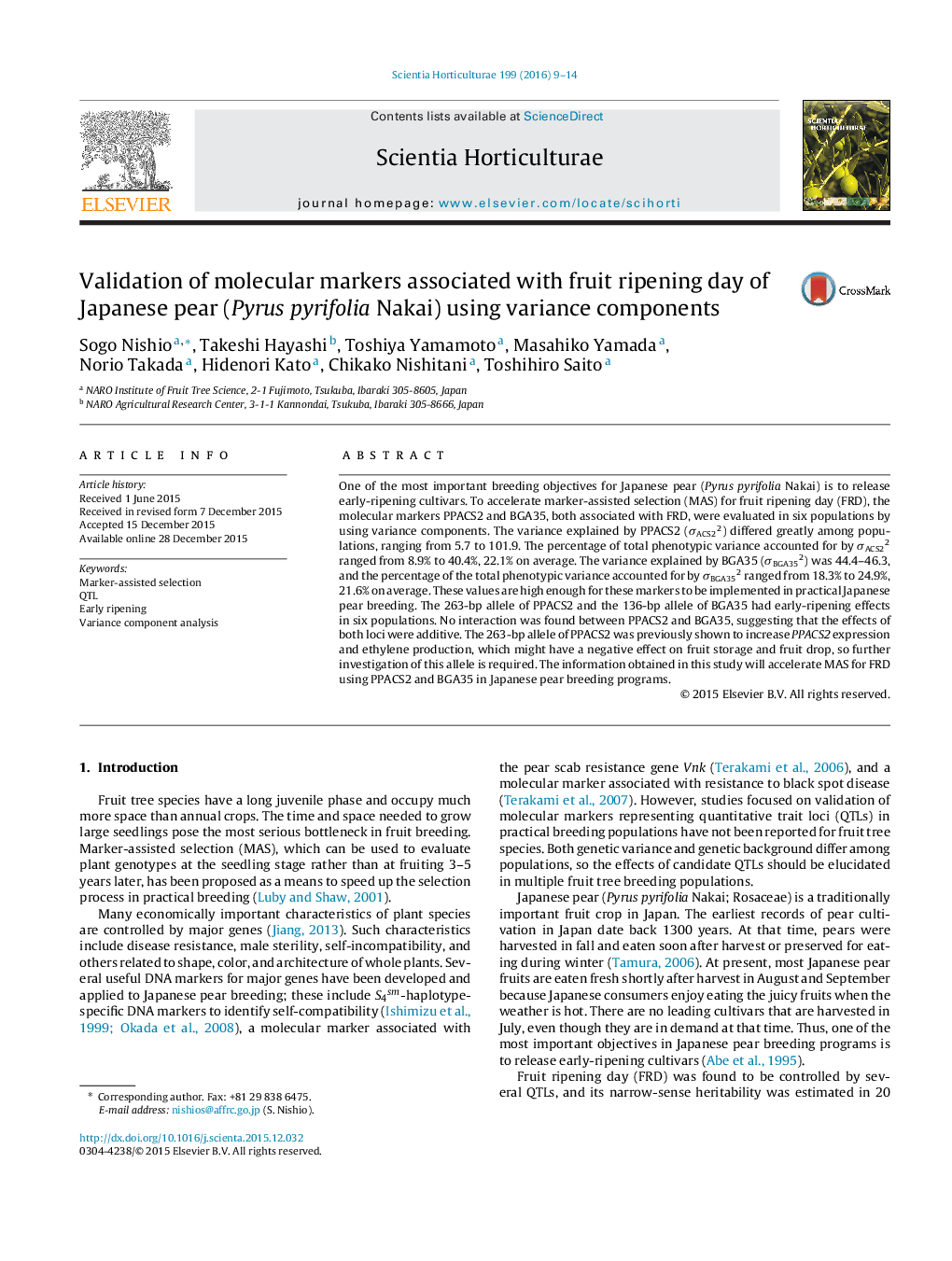| Article ID | Journal | Published Year | Pages | File Type |
|---|---|---|---|---|
| 4566107 | Scientia Horticulturae | 2016 | 6 Pages |
•The variance explained by PPACS2 differed greatly among populations.•The percentage of total phenotypic variance accounted for by PPACS2 variance ranged from 8.9% to 40.4%.•The percentage of the total phenotypic variance accounted for by BGA35 variance ranged from 18.3% to 24.9%.•No interaction was found between PPACS2 and BGA35.
One of the most important breeding objectives for Japanese pear (Pyrus pyrifolia Nakai) is to release early-ripening cultivars. To accelerate marker-assisted selection (MAS) for fruit ripening day (FRD), the molecular markers PPACS2 and BGA35, both associated with FRD, were evaluated in six populations by using variance components. The variance explained by PPACS2 (σACS22) differed greatly among populations, ranging from 5.7 to 101.9. The percentage of total phenotypic variance accounted for by σACS22 ranged from 8.9% to 40.4%, 22.1% on average. The variance explained by BGA35 (σBGA352) was 44.4–46.3, and the percentage of the total phenotypic variance accounted for by σBGA352 ranged from 18.3% to 24.9%, 21.6% on average. These values are high enough for these markers to be implemented in practical Japanese pear breeding. The 263-bp allele of PPACS2 and the 136-bp allele of BGA35 had early-ripening effects in six populations. No interaction was found between PPACS2 and BGA35, suggesting that the effects of both loci were additive. The 263-bp allele of PPACS2 was previously shown to increase PPACS2 expression and ethylene production, which might have a negative effect on fruit storage and fruit drop, so further investigation of this allele is required. The information obtained in this study will accelerate MAS for FRD using PPACS2 and BGA35 in Japanese pear breeding programs.
